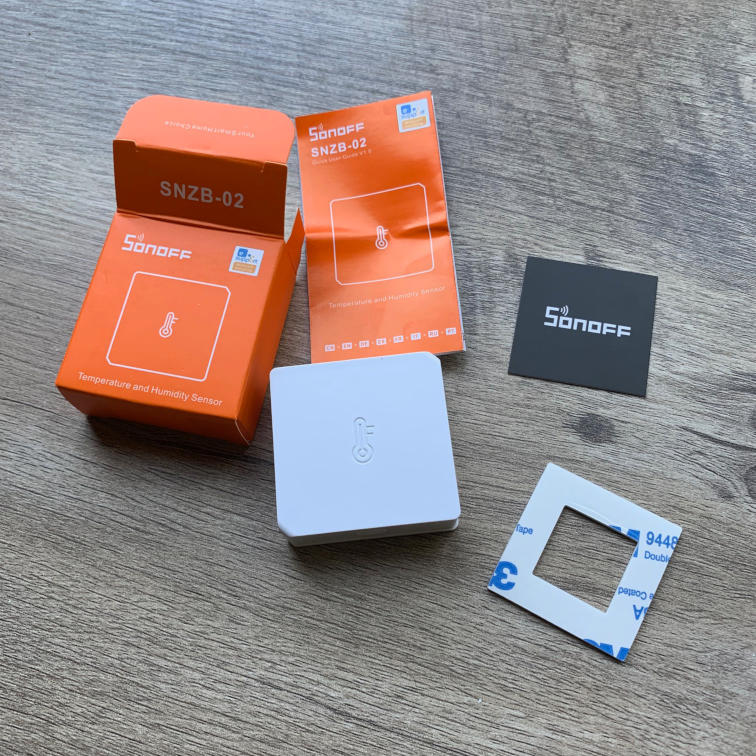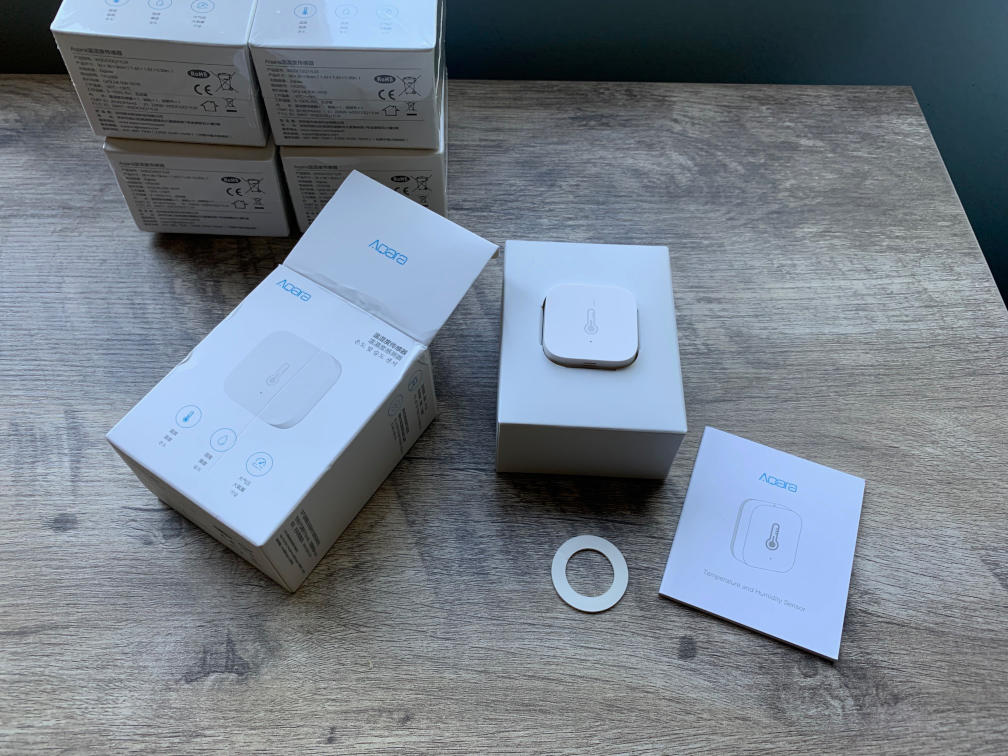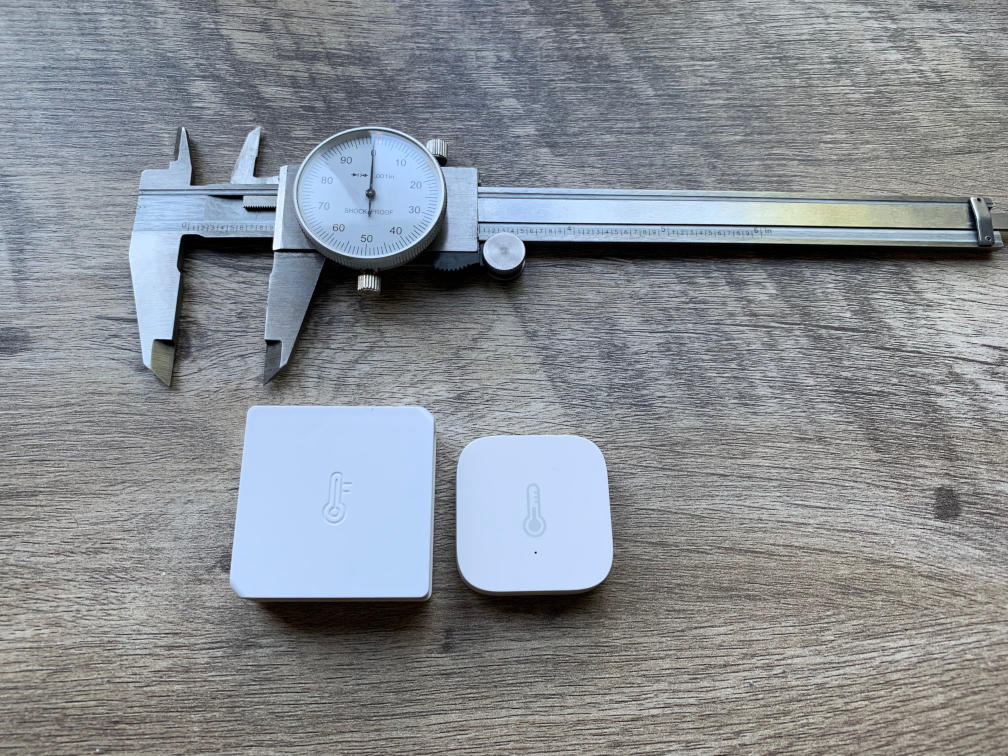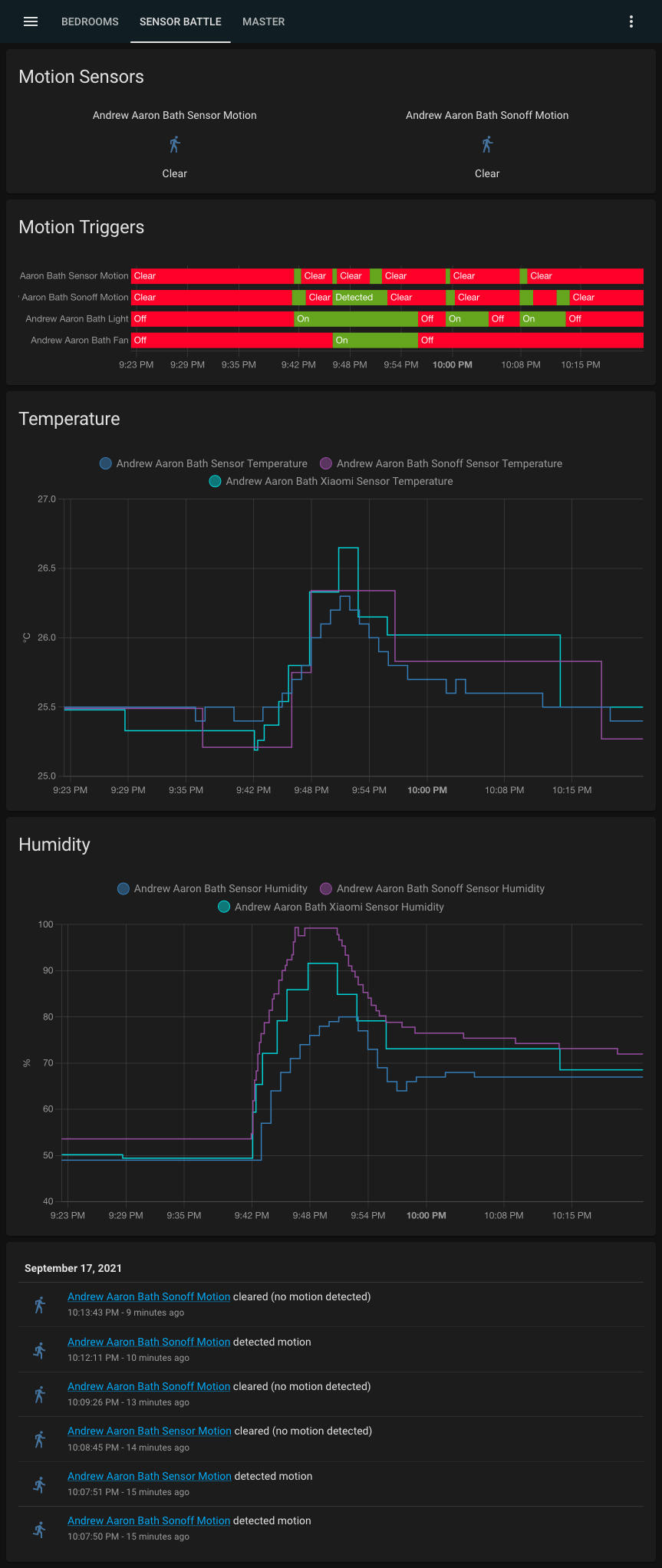Temperature and Humidity Sensor Showdown
When I started my bathroom automation journey, I used the Inovelli 4-in-1 Motion Sensor (LZW60) which had sensors for motion, temperature, humidity, and ambient light level in my Smart Bathroom Project. I was happy with the automation, but wanted to try out some cheaper sensors to see if they were adequate for the other bathrooms in my house. I decided to try the Aqara (Xiaomi) Temperature and Humidity Sensor and the Sonoff SNZB-02 Temperature and Humidity Sensor as cheap alternatives for temperature and humidity. I bought several of each sensor on Aliexpress, and set them up in my bathroom to compare data.
Unboxing⌗
The unboxing experience for each sensor was very different.

The Sonoff sensor comes in a box barely bigger than the sensor itself, along with a square of double sided foam tape to mount the sensor, and a small paper manual. The packaging is efficient and functional. You must pry off the back of the sensor using a small flat blade screwdriver (I was worried I’d break it) and remove a piece of paper covering the battery terminals, then it’s ready for pairing. To pair, you can hold the button on the sensor with your finger for 5 seconds or so and it will start the process.

The Aqara sensor comes in a much larger box. The sensor itself is fairly small, but it’s sitting in a white paper board stand which is actually entirely empty inside. The sensor comes with a pre-installed foam tape ring, and they include an extra one in the box, along with a small paper manual. The box could have easily been half the size or less and still fit everything inside. I mention this because I find the large white interior box very wasteful, and it adds up when you buy dozens of sensors per house. The inclusion of an extra foam tape ring was a nice touch though. I was unable to remove the battery cover easily with the screwdrivers I had on hand, it seems to be designed to use a really wide blade (such as a butter knife). However, there is no paper covering the battery terminals, so it’s ready for pairing out of the box. Unlike the Sonoff sensor, the button is not readily accessible, and must be poked through a hole using a bent papercip or similar tool.

The Aqara sensor is significantly smaller than the Sonoff sensor, although neither is particularly large. Both would be relatively unobtrusive mounted on the ceiling of a room.
Test Setup⌗
Both sensors were mounted on the ceiling in between the shower and the bathroom fan, with the ventilation holes in both sensors facing the shower. This gives these sensors a significant advantage over the Inovelli sensor, which is mounted on the opposite corner of the room for good motion view.

Both sensors were paired in Zigbee2MQTT through the same repeater, and added to Home Assistant. Both had approximately 70 LQI (link quality). Both were left with all default settigns. Both sensors report all of the same data (Battery, Voltage, Temperature, Humidity, Linkquality), with the Aqara sensor also reporting pressure. I did not include pressure data or long term battery life in this comparison, only temperature and humidity reporting. The Inovelli sensor is paired with ZWaveJS2MQTT and has the reporting interval set to 1 minute (not the default), which is how it was already configured from my Smart Bathroom Project.
The Test⌗
All three sensors ran for a week to compare results. During this time, control of the bath fan was still done by the Inovelli sensor, with the other sensors only used for logging. Data from a single shower is shown below, for analysis.

A few conclusions can be made from this data:
- All of the sensors report the same temperature steady-state, before the shower.
- The Sonoff sensor reports slightly higher humidity than the other two sensors at all times, but this is within the tolerance of all of the sensors.
- As Zigbee2MQTT’s documentation warns, the Sonoff sensor has a very slow reporting interval for temperature, but a fairly quick reporting interval for humidity (which seems odd). This is confirmed with this data, where the Sonoff sensor reports no temperature changes for over a half hour, but continues reporting humidity changes.
- The Aqara (Xiaomi) sensor also does some stair-stepping in reporting with both temperature and humidity, but the response seems closer for both signals than the Sonoff, and is fast enough for bathroom humidity control.
- Neither sensor is fast enough for closed-loop temperature control.
- Due to their location much closer to the shower, the Sonoff and Aqara (Xiaomi) sensors both report humidity much faster and reach much higher numbers than the Inovelli motion sensor on the far side of the fan from the shower. This also causes the humidity to decay much slower from these sensors than the Inovelli, as air enters the bathroom near the Inovelli motion sensor and exits through the fan, while the shower area itself is essentially not ventilated.
- While not part of the showdown, I also included a Sonoff SNZB-03 motion sensor mounted between the two temperature + humidity sensors, and found that it performed better than the Inovelli at detecting motion in the bathroom. This is due to the very small size of the bathroom and the detection pattern of the Inovelli being designed for wall mounting (with a half-cone shape), while the Sonoff SNZB-03 has a full cone shape for ceiling mounting. In the tiny bathroom, the ceiling mount sensor is a better choice as it can ‘see’ into the shower and not turn the lights off while showering as the Inovelli would. I don’t believe this is a fault of the Inovelli sensor, but you do have to be aware of the detection pattern when selecting a sensor for wall vs ceiling mounting.
The Parts List⌗
Here are all of the files and parts required to replicate this project.